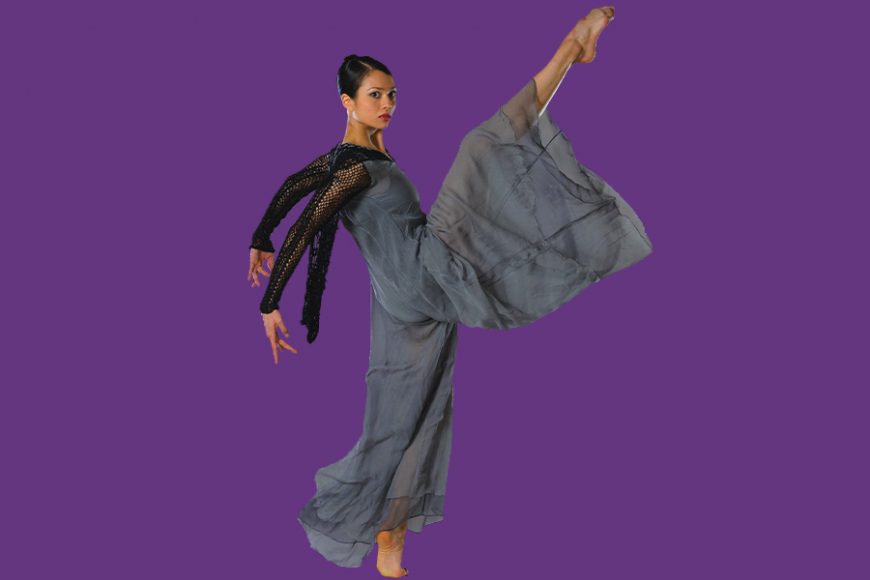Carole Alexis, artistic director and choreographer of Westchester County’s Ballet des Amériques, was not surprised by “Good Morning America” co-anchor Lara Spencer mocking Prince George for taking ballet lessons.
Everyone jumped on Spencer, who immediately apologized. But she was only giving flippant voice to what others think, Alexis says.
“I see this prejudice every day,” she says. “But do we know enough about (dance)? The lack of knowledge leads to prejudice, and that goes with everything in our society.”
It’s particularly ironic as dance grew out of prehistoric religious rituals led by men. In the Baroque period, France’s Louis XIV consolidated his power at Versailles in part through elaborately costumed balletic spectacles with himself as Apollo, god of the sun, music and truth. (Hence Louis’ nickname, “the Sun King.”) It was another Louis, the legendary New York Yankees first baseman Henry Louis “Lou” Gehrig — a regular attendee of the opera and ballet — who said that dancers make the best athletes. Among elite athletes today, Novak Djokovic, famed for his flexibility, studies ballet, while Serena Williams has married the warrior woman to the tutu.
Still, many in American society see the arts, particularly dance, as feminine, and the feminine as worth less than the masculine. To Alexis, “it’s not just an attack on the boys; it’s an attack on the girls.”
She is trying to change that image with the Port Chester-based company’s “Ballet Is Not Pink” performances and presentations at schools, libraries and community centers. (She would also like to do some artist residencies at schools but knows that funding for arts education has diminished in this country over the last 50 years.) Nevertheless, Alexis is doing what she can to promote the unity and universality of all the arts in productions like “Nutcracker Dream,” whose two sold-out performances at the Emelin Theatre in Mamaroneck last year will quadruple this December. But before we have visions of sugarplums dancing in our heads, the company will offer an evening of her choreography — including the ballet “Narcissistically,” an apt title for our selfie age — at the Emelin Oct. 24.
Alexis’ belief in the global power of art stems from her days on the island of Martinique in the French West Indies, the child of a French mother and a Martinican father.
“When you’re a child, you imagine what’s in your head (to be real),” she says. At SERMAC, (Service Municipal d’Action Culturelle), the free, government-sponsored performing arts center founded by the poet Aimé Césaire in a beautiful floral park amid colonial buildings in Fort-de-France Bay, Alexis imagined herself as a Japanese girl dancing. “(Dance) represented the idea of all the people of the world,” she said. It introduced her to the universality of dance as well as its relationship to the visual arts (costume and set design), music and theater. It also reinforced the Martinican idea, born of its slave history, “that you can repair the individual through the arts.”
From Martinique, where Alexis was commissioned to create her first major work at age 13 for the Festival Fort-de-France, she made the leap to Dakar, Senegal to study at the Mudra Afrique School founded by UNESCO, Léopold Sédar Senghor and Maurice Béjart (1927-2007).
The controversial Béjart was one of the best-known choreographers of the last century, whose highly theatrical, often eroticized ballets for his Ballet du XXe Siècle (Ballet of the 20th Century) both fascinated and repelled. In perhaps his best-known work, “Boléro,” set to Maurice Ravel’s score of the same name, a woman dances on a tabletop for a group of men, who join her and the dance in the work’s climax. A 1983 performance at Manhattan’s City Center Theater, however, featured Béjart muse Jorge Donn on the tabletop in a homoerotic interpretation that left women in the audience cheering and their male companions speechless.
“Béjart was a very strong personality,” says Alexis, whose company will perform her version of “Boléro” at the Emelin Oct. 24, “extremely generous in a way and absolutely sincere, which I love in people. He was very well-educated and had an extraordinary eye.”
From Béjart, Alexis learned that performing is never separated from training. And that’s why when she decided to come to New York — after dancing with various troupes in Paris — she knew it would be to found a conservatory and a company in the European tradition that would nonetheless draw on her Afro-Caribbean training.
Today the eight-year-old Ballet des Amériques has 30 students and 12 dancers. Alexis will come full circle with the company in February when she takes it on tour to her native Martinique. But whether on the Caribbean Sea or the Long Island Sound, she wants dancers and their audiences to experience the breadth of the art form.
“When you are a dancer, you have to be open to whatever dance is great,” she says of an art that has embraced everything from ballet to modern to tap, jazz, Latin, ballroom, Broadway and hip-hop.
And you have to be open to all kinds of people.
“In Béjart’s audiences, you’d find everyone there,” she remembers. “That’s the way dance should be.”
Ballet des Amériques performs an “Evening of Dance in Westchester” at the Emelin Theatre Oct. 24 and “Nutcracker Dream” there Dec. 15, 21, 22 and 28. After its Martinique tour (Feb. 3 through 8), the company returns to the United States for an “Evening of Dance in Port Chester” Feb. 29 and an “Evening of Dance in Westchester” at the Emelin March 19. The company closes out its Emelin season June 13 and 14. For more, visit bdaconservatory.com.






